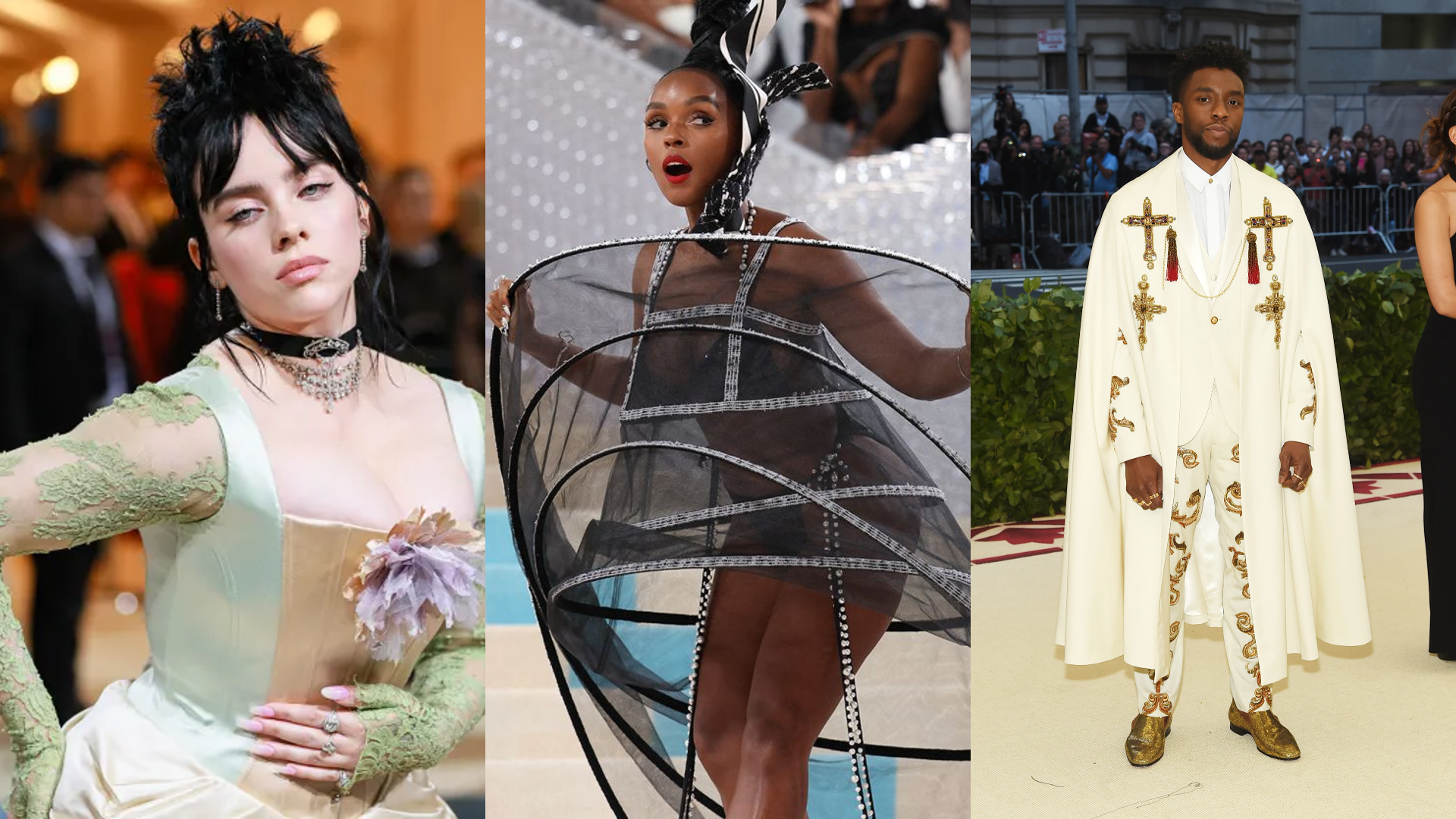The Met Gala, or The Met Ball, is the annual fundraising gala every fashion enthusiast waits for. The funds are raised towards the Metropolitan Museum of Art’s Costume Institute. It’s popular for its glamorous looks and the respected figures that attend the event make it the most prestigious fashion event in the world as well as “fashion’s biggest night.” Each year, the event revolves around a specific theme, which sets the tone for the extravagant and avant-garde fashion seen on the red carpet. It happens on the 1st Monday of May.
The Met Gala’s fashion is characterised by extravagance, theatricality, and attention to detail. From intricate embroidery and luxurious fabrics, attendees spare no expense in crafting show-stopping looks that captivate audiences and spark digital conversation. Fashion is not just about looking good; it’s about storytelling and pushing the boundaries of creativity. Attendees draw inspiration from art, history, culture, and current events to create looks that are both visually stunning and rich.
Why is it relevant?
The Met Gala red carpet is also a platform for designers to showcase their talent and creativity on a global stage. Custom-made couture gowns, experimental designs, and innovative techniques are celebrated and critiqued by fashion critics and enthusiasts alike, shaping the narrative of fashion for the year ahead. In addition to the fashion on the red carpet, the Met Gala serves as a networking event for the fashion industry. It’s an opportunity for creative collaboration, trend-spotting, and cultural exchange, solidifying the Met Gala’s status as a pinnacle of fashion excellence.
The Met Gala’s impact extends beyond the confines of the museum walls, shaping trends, influencing pop culture, and inspiring future generations of designers and fashion enthusiasts. From gorgeous moments to controversial looks, the Met Gala continues to push the boundaries of fashion and ignite conversations about art, culture, and identity.
The Best Met Gala Looks Since 2005
Michaela Coel, 2023, “Karl Lagerfeld: A Line of Beauty”
The 2023 Met Gala had several absurd looks, from Jared Leto to Lil Nas X, but Michaela Coel did not come to kid around. While not exactly on theme, her custom-made Schiaparelli dress deserves attention.
Blake Lively, 2022, “In America: An Anthology of Fashion”
Blake Lively wore a Versace dress, a love letter to New York City. It was inspired by the Statue of Liberty and the extravagant bow unveiled a long blue train.
Zendaya, 2018, “Heavenly Bodies: Fashion and the Catholic Imagination”
Did you also expect Zendaya to appear on this list? This for one list, we highlight the time when Zendaya decked up as a reimagined Joan of Arc, made by Atelier Versace. It nailed the 2018 evening’s theme, “Heavenly Bodies: Fashion and the Catholic Imagination,” as Joan of Arc is a famed icon of Catholicism.
Rihanna, 2017, “Rei Kawakubo/Comme des Garçons: Art of the In-Between”
For the 2017 theme, Rihanna wore a Comme Des Garçons’ colourful negentropy of a dress. Rihanna has had many iconic looks before but her 2017 look embodied the theme.
Madonna, 2013, “Punk: Chaos to Couture”
The controversial queen herself, Madonna, wore Givenchy Haute Couture to the 2013 Met Gala.
Carey Mulligan, 2012, “Schiaparelli and Prada: Impossible Conversations”
The co-host of the 2012 Met Gala and British actress, Carey Mulligan, wears Prada.
Naomi Campbell, 2011, “Alexander McQueen: Savage Beauty”
The legendary model and personality, Naomi Campbell, pays tribute to Alexander McQueen.
Blake Lively, 2010, “American Woman: Fashioning a National Identity”
Blake Lively makes it on the list again! She deserves it with her simple but classy 2010 Met Gala look in a Marchesa dress.
Kate Moss, 2009, “Muse: Embodying Fashion”
Who better to embody the muse than Kate Moss? Moss wore Marc Jacobs at the 2009 Met Gala, bringing back the classic glam look.
Taylor Swift, 2008, “Superheroes: Fashion and Fantasy”
The pop star sensation Taylor Swift was bejewelled on the red carpet with a Badgley Mischka look.
Cate Blancett, 2007, “Poiret: King of Fashion”
Cate Blancett wore Balenciaga and the look was inspired by the works of Paul Poiret.
Alexander McQueen and Sarah Jessica Parker, 2006, “AngloMania: Tradition and Transgression in British Fashion”
The British designer Alexander McQueen fashioned his and Sarah Jessica Parker’s looks. The duo are unforgettable in the history of The Met Gala.
Selma Blair, 2005, “The House of Chanel”
Selma Blair appropriately wore a gorgeous Chanel dress.
